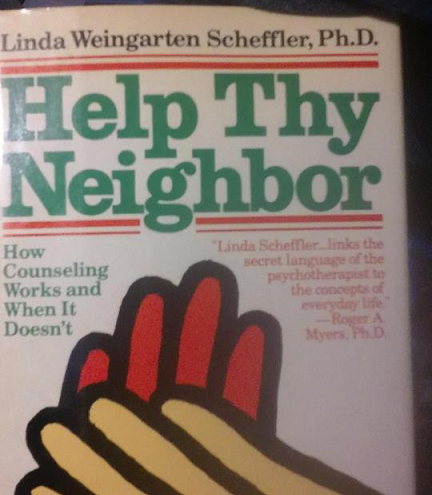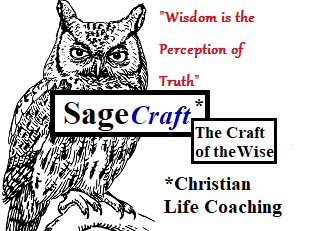How counseling works and when it doesn’t
By Linda Weingarten Scheffler, 1984, 245 Pages
PAGE UNDER CONSTRUCTION: VISIT AGAIN FOR UPDATES!

TABLE OF CONTENTS
ANALYSIS BEGINS AFTER TABLE OF CONTENTS
- Counseling by Nonprofessinoals or Peers – Who and Where? The Troublesome Assumption, Counselor Yes! Client NO! Cautions for Nonprofessionals
- Hidden Agendas and Pitfalls in Counseling by Nonprofessionals -The Search for Acceptance, The Desire to be “Normal”, Seeking Others Like Ourselves
- Understanding the Ambivalent Quest for Help -Self-Discovery: Getting and Failing to Get Help, Principles of Children’s Growth and Development: Socialization Reactions to Helpers: Transference, Resistance
- Counselor’s Expectations and the Surprising Challenge Helping Others is a Way of Helping Ourselves, Self-Discovery through Experiences Helping Others, Counselor’s Feelings, and the Human Helping Alliance. The Importance of Self-Awareness, How to view, and Deal with Counseling Failures.
- Clarifying the Helping Role – The Helping Relationship is Unreal The Helping Role is Ambiguous
- Friend or Counselor
- Authority, Advocate or Counselor
- Savior, Pawn, or Counselor
- Personal Characteristics of Effective Counselors – A. Availability, Reliability, and Responsibility B. Interest, Warmth, Enthusiasm, and Respect C. Openness and Honesty D. Objectivity: Keeping One’s Self and the Client in Perspective E. Empathy: Putting One’s Self in the Other’s Shoes F. Acceptance of Clients and Their Efforts to Help Themselves G. Accountability: Monitoring the Counseling Process H. Understanding Confidentiality
- Skills Required of Effective Counselors – A Observation B. Listening and Checking Understanding C. Exploring Content D. Recognizing and Exploring Feelings E. Facilitating Communication F. Giving Feedback and Interpretation G. Assessment
- The Course of Counseling – Initial Stages – Where are They? How Did They Get There? Middle Phase – What Would They Prefer Instead? Final Phase – How Are They Going to Get There/Make the Changes?
- The Final Chapter and the Beginning-Basic Elements of Counseling, The Counseling Framework, Counseling Skills, Essential Counselor Characteristics, A Method for Evaluating Relationships. Counseling is a Working Relationship Counseling is Focused on the Client. Counseling Has a Specified Goals Counseling Has a Regular and Limited Time-Frame, Counseling Focuses on the Here and Now, Counseling Has Boundaries Counseling is based on a Joint Contract
BEFORE WE BEGIN:
The first thing I want to point out is this: As you explore the subject matter of this book, all you have to do is change the word “COUNSELING/COUNSELOR” for “LIFE COACHING/LIFE COACH”. Do that, and you will have the consummate Life Coaching Skills Handbook. Life Coaching is, after all, PEER SUPPORT.
I would challenge you to find anything in today’s “LIFE COACHING SKILLS” training, which is flooding the internet, that is not already treated, in considerable depth, in this book… I have noticed one problem, though. This book appears to be out of print. I will try to remedy that with these pages.
A DISTINCTION NEEDS TO BE MADE:
1st: Life Coaching “Skills” (The nuts and bolts of helping Clients change)
2nd: Life Coaching “Marketing, Promotion, and Sales.”
These are two different subject areas. The 1st area is where the “Magic Happens”. This is where changes are made and results are produced. The skills are what count. Without the skills to facilitate real, measurable, and lasting positive change, nothing else you do matters. The 2nd area of marketing and sales involves promoting your Life Coaching services and is not the main focus.
The essential element for any Life Coach is to have the SKILLS necessary, to help Clients (both Individuals and Organizations) to Change in meaningful directions. The book, [and this website] are dedicated to teaching solid, real-world Professional Life Coaching skills. Marketing and Sales are a secondary consideration.
